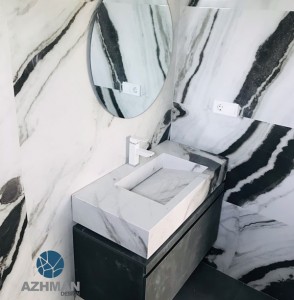Chatbots in Health Care: Connecting Patients to Information NCBI Bookshelf
While this list compiles the top 10 chatbots today, there are countless more around and countless more in development that has the potential to deeply impact how we perceive healthcare itself. With new advancements in the field of artificial intelligence and machine learning advancing every day, the healthcare industry is being affected as well. OneRemission is the second chatbot featured on this list that caters its offerings to cancer-stricken users. As with CancerChatbot, the primary aim of the chatbot is to ease the lives of its users by providing them with relevant, curated information about their afflictions.
This can be particularly useful for patients requiring urgent medical attention or having questions outside regular office hours. This global experience will impact the healthcare industry’s dependence on chatbots, and might provide broad and new chatbot implementation opportunities in the future. Chatbots can extract patient information by asking simple questions such as their name, address, symptoms, current doctor, and insurance details.
- And then, keep the chatbot updated with the latest medical knowledge and guidelines to ensure accuracy and relevance.
- Both of these reviews focused on healthbots that were available in scientific literature only and did not include commercially available apps.
- This includes the triple aim of health care that encompasses improving the experience of care, improving the health of populations, and reducing per capita costs [21].
- The Security Rule describes the physical safeguards as the physical measures, policies, and processes you have to protect a covered entity’s electronic PHI from security violations.
The literature review and chatbot search were all conducted by a single reviewer, which could have potentially introduced bias and limited findings. In addition, our review explored a broad range of health care topics, and some areas could have been elaborated upon and explored more deeply. Furthermore, only a limited number of studies were included for each subtopic of chatbots for oncology apps because of the scarcity of studies addressing this topic. Future studies should consider refining the search strategy to identify other potentially relevant sources that may have been overlooked and assign multiple reviews to limit individual bias.
This report is not a systematic review and does not involve critical appraisal or include a detailed summary of study findings. It is not intended to provide recommendations for or against the use of the technology and focuses only on AI chatbots in health care settings, not broader used of AI within health care. The prevalence of cancer is increasing along with the number of survivors of cancer, partly because of improved treatment techniques and early detection [77]. A number of these individuals require support after hospitalization or treatment periods.
Automate & Scale Patient Support
Traditional AI chatbots can provide quick customer service, but have limitations. Many rely on rule-based systems that automate tasks and provide predefined responses to customer inquiries. Designing chatbot interfaces for medical information involves training the Natural Language Processing (NLP) model on medical terminology. Implement dynamic conversation pathways for personalized responses, enhancing accuracy. Regularly update the chatbot’s knowledge base to incorporate new medical knowledge. Implement user feedback mechanisms to iteratively refine the chatbot based on insights gathered.
Healthcare providers can overcome this challenge by working with experienced UX designers and testing chatbots with diverse patients to ensure that they meet their needs and expectations. As such, there are concerns about how chatbots collect, store, and use patient data. Healthcare providers must ensure that privacy laws and ethical standards handle patient data. In this article, we will explore how chatbots in healthcare can improve patient engagement and experience and streamline internal and external support. With a lack of proper input data, there is the ongoing risk of “hallucinations,” delivering inaccurate or irrelevant answers that require the customer to escalate the conversation to another channel. Any advantage of a chatbot can be a disadvantage if the wrong platform, programming, or data are used.
A new study released Thursday by research group Epoch AI projects that tech companies will exhaust the supply of publicly available training data for AI language models by roughly the turn of the decade — sometime between 2026 and 2032. Their paper’s findings reveal a gap between LLMs and their ability to answer health-related questions. Chandra and Jin point out the limitations of LLMs for users and developers but also highlight their potential. Georgia Tech researchers say non-English speakers shouldn’t rely on chatbots like ChatGPT to provide valuable healthcare advice. The data sources an AI engine learns from is an important factor in whether or not an AI can pull the correct information.
The ability of chatbots to ensure privacy is especially important, as vast amounts of personal and medical information are often collected without users being aware, including voice recognition and geographical tracking. The public’s lack of confidence is not surprising, given the increased frequency and magnitude of high-profile security breaches and inappropriate use of data [95]. Unlike financial data that becomes obsolete after being stolen, medical data are particularly valuable, as they are not perishable.
For medical diagnosis and other healthcare applications, the accuracy and dependability of the chatbot are improved through ongoing development based on user interactions. In recent years, the healthcare landscape has witnessed a transformative integration of technology, with medical chatbots at the forefront of this evolution. Medical chatbots also referred to as health bots or medical AI chatbots, have become instrumental in reshaping patient engagement and accessibility within the healthcare industry. Hence, chatbots in healthcare are reshaping patient interactions and accessibility. Selecting the right platform and technology is critical for developing a successful healthcare chatbot, and Capacity is an ideal choice for healthcare organizations.
More specifically, they hold promise in addressing the triple aim of health care by improving the quality of care, bettering the health of populations, and reducing the burden or cost of our health care system. Beyond cancer care, there is an increasing number of creative ways in which chatbots could be applicable to health care. During the COVID-19 pandemic, chatbots were already deployed to share information, suggest behavior, and offer emotional support. They have the potential to prevent misinformation, detect symptoms, and lessen the mental health burden during global pandemics [111].
You do not design a conversational pathway the way you perceive your intended users, but with real customer data that shows how they want their conversations to be. Buoy Health was built by a team of doctors and AI developers through the Harvard Innovation Laboratory. Trained on clinical data from more than 18,000 medical articles and journals, Buoy’s chatbot for medical diagnosis provides users with their likely diagnoses and accurate answers to their health questions. Do medical chatbots powered by AI technologies cause significant paradigm shifts in healthcare? Chatbots must be designed with the user in mind, providing patients a seamless and intuitive experience.
Providers can overcome this challenge by providing staff education and training and demonstrating the benefits of chatbots in improving patient outcomes and reducing workload. Chatbots provide patients with a more personalized experience, making them feel more connected to their healthcare providers. Chatbots can help patients feel more comfortable and involved in their healthcare by conversationally engaging with them. IBM watsonx Assistant helps organizations provide better customer experiences with an AI chatbot that understands the language of the business, connects to existing customer care systems, and deploys anywhere with enterprise security and scalability. Watsonx Assistant automates repetitive tasks and uses machine learning to resolve customer support issues quickly and efficiently.
The Role of Technology in Mental Health Care
Added life expectancy poses new challenges for both patients and the health care team. For example, many patients now require extended at-home support and monitoring, whereas health care workers deal with an increased workload. Although clinicians’ knowledge base in the use of scientific evidence to guide decision-making has expanded, there are still many other facets to the quality of care that has yet to catch up. Key areas of focus are safety, effectiveness, timeliness, efficiency, equitability, and patient-centered care [20]. Even after addressing these issues and establishing the safety or efficacy of chatbots, human elements in health care will not be replaceable. Therefore, chatbots have the potential to be integrated into clinical practice by working alongside health practitioners to reduce costs, refine workflow efficiencies, and improve patient outcomes.
China unveils ChatGPT-like medical chatbot service – Healthcare IT News
China unveils ChatGPT-like medical chatbot service.
Posted: Tue, 19 Mar 2024 07:00:00 GMT [source]
Creating chatbots with prespecified answers is simple; however, the problem becomes more complex when answers are open. Bella, one of the most advanced text-based chatbots on the market advertised as a coach for adults, gets stuck when responses are not prompted [51]. Given all the uncertainties, chatbots hold potential for those looking to quit smoking, as they prove to be more acceptable for users when dealing with stigmatized health issues compared with general practitioners [7].
This is particularly important in relation to health care, an area where clinical practice guidelines, best practices, and safety data are continuously changing. The lack of real-time updates to the content of chatbots could result in people receiving out-of-date information in response to their queries. The same can be true for human-to-human interactions; however, a health care provider does have the ability to access up-to-date information in real time, whereas an AI chatbot does not.
Use Cases of Chatbots in Healthcare
Enterprise-grade, self-learning generative AI chatbots built on a conversational AI platform are continually and automatically improving. They employ algorithms that automatically learn from past interactions how best to answer questions and improve conversation flow routing. Infused with advanced AI capabilities, medical chatbot play a pivotal role in the initial assessment of symptoms.
From the perspective of AI developers, Epoch’s study says paying millions of humans to generate the text that AI models will need “is unlikely to be an economical way” to drive better technical performance. “Since we observed this language disparity in their performance, LLM developers should focus on improving accuracy, correctness, consistency, and reliability in other languages,” Jin said. A team of researchers from the College of Computing at Georgia Tech has developed a framework for assessing the capabilities of large language models (LLMs). SmartBot360 combines the best of both worlds, by allowing your organization to create and maintain simple or complex AI chatbots in a DIY fashion, and only request expert consultation when needed. Take this 5-minute assessment to find out where you can optimize your customer service interactions with AI to increase customer satisfaction, reduce costs and drive revenue. The terms chatbot, AI chatbot and virtual agent are often used interchangeably, which can cause confusion.
The removal of options may slowly reduce the patient’s awareness of alternatives and interfere with free choice [100]. Knowledge domain classification is based on accessible https://chat.openai.com/ knowledge or the data used to train the chatbot. Under this category are the open domain for general topics and the closed domain focusing on more specific information.
Much has changed since then, including new techniques that enabled AI researchers to make better use of the data they already have and sometimes “overtrain” on the same sources multiple times. This dataset contains 690 questions extracted from anonymous consumer queries submitted to MedlinePlus. The answers are sourced from medical references, such as MedlinePlus and DailyMed. XLingHealth contains question-answer pairs that chatbots can reference, which the group hopes will spark improvement within LLMs. Set up an SMS-based chatbot to automatically follow-up with a patient when it is time for their next checkup, or check in with them a certain amount of time after their procedure to make sure they are following proper steps to recover. Most chatbots work well when patients follow the chatbot’s prompts and choices, but often fail when they go off-script.
Chatbots are also great for conducting feedback surveys to assess patient satisfaction. The copyright and other intellectual property rights in this document are owned by CADTH and its licensors. These rights are protected by the Canadian Copyright Act and other national and international laws and agreements.
Upon downloading the app, the user provides all necessary information that the app’s artificially intelligent models process and drives the patient towards a consultation with the in-built symptom checker. After, the user is provided with a diagnostic report and the option to engage in a video-based consultation with a practitioner to take the necessary next steps as required. With rapid advancements in the field of artificial intelligence and machine learning, it is quickly affecting the healthcare industry as well. One of the ways AI algorithms have adapted for the industry is through chatbots, or programs coded to carry out a textual conversation with the user using context cues and pre-set responses. Chatbots have found a wide user base across all sorts of industries thanks to their handy and effective ability to automate tasks and save time for both the service’s user and provider, and the healthcare industry is no different. Many healthcare chatbots using artificial intelligence already exist in the healthcare industry.
Start by defining specific objectives for the chatbot, such as appointment scheduling or symptom checking, aligning with existing workflows. Identify the target audience and potential user scenarios to tailor the chatbot’s functionalities. Integration with electronic health record (EHR) systems streamlines access to relevant patient data, enhancing personalized assistance. Regularly update the chatbot based on user feedback and healthcare advancements to ensure continuous alignment with evolving workflows. The overall functionality, dependability, and user experience of chatbots in the healthcare industry are improved by adding these extra steps to the development and deployment process. Through the adoption of a patient-centered technology strategy, healthcare providers can fully utilize medical chatbots to transform the way patients receive and receive care.
Chatbots have the potential to change access to care options for people who live in rural or remote areas and do not have easy access to health care providers in person or through telemedicine. People who are more comfortable with online services may choose to use a chatbot for information finding, symptom checking, or appointment booking rather than speaking with a person on the phone. Appointments for minor ailments or information gathering could potentially be directed toward an automated AI system, freeing up in-person appointments for people with more complex or urgent health issues. Chatbots can help patients navigate a sometimes complex health care system when used to identify available providers and to facilitate appointment scheduling.
Nonetheless, chatbots for self-diagnosis are an effective way of advising patients as the first point of contact if accuracy and sensitivity requirements can be satisfied. Chatbots’ robustness of integrating and learning from large clinical data sets, along with its ability to seamlessly communicate with users, contributes to its widespread integration in various health care components. Given the current status and challenges of cancer care, chatbots will likely be a key player in this field’s continual improvement.
A more specific healthcare example is whenever patients have an emergency or a simple question asking about insurance, the bot would be able to extract the intent and guide the patient accordingly. Whether it’s creating or optimizing a chatbot, our healthcare chatbot experts can work with you to set up a chatbot according to your goals. For example, an e-commerce company could deploy a chatbot to provide browsing customers with more detailed information about the products they’re viewing.
In addition to diagnosis, Buoy Health (Buoy Health, Inc) assists users in identifying the cause of their illness and provides medical advice [26]. Another chatbot designed by Harshitha et al [27] uses dialog flow to provide an initial analysis of breast cancer symptoms. It has been proven to be 95% accurate in differentiating between normal and cancerous images. A study of 3 mobile app–based chatbot symptom checkers, Babylon (Babylon Health, Inc), Your.md (Healthily, Inc), and Ada (Ada, Inc), indicated that sensitivity remained low at 33% for the detection of head and neck cancer [28]. The number of studies assessing the development, implementation, and effectiveness are still relatively limited compared with the diversity of chatbots currently available. Further studies are required to establish the efficacy across various conditions and populations.
This medical diagnosis chatbot also offers additional med info for every symptom you input. While chatbots offer many benefits for healthcare providers and patients, several challenges must be addressed to implement them successfully. Healthcare providers must ensure that chatbots are regularly updated and maintained for accuracy and reliability. When using chatbots in healthcare, it is essential to ensure that patients understand how their data will be used and are allowed to opt out if they choose. AI chatbots are used in healthcare to provide patients with a more personalized experience while reducing the workload of healthcare professionals.
Chatbots can handle several inquiries and tasks simultaneously without added human resources. This can save you on staffing and admin overhead while still letting you provide Chat GPT the quality of care your patients expect. Your patients can access the chatbot through a ton of different channels, giving them access to help anytime and anywhere.
That’ll help your patients get a seamless and convenient experience when they need it. Our review suggests that healthbots, while potentially transformative in centering care around the user, are in a nascent state of development and require further research on development, automation, and adoption for a population-level health impact. An AI-fueled platform that supports patient engagement and improves communication in your healthcare organization. This means that hospitals could leverage digital humans as health assistants, capable of providing empathetic, around-the-clock aid to patients, particularly before or after their surgery. Chatbot becomes a vital point of communication and information gathering at unforeseeable times like a pandemic as it limits human interaction while still retaining patient engagement.
Being able to effectively respond to such off-script patient utterances is what differentiates AI chatbots from scripted chatbots. This not only mitigates the wait time for crucial information but also ensures accessibility around the clock. The chatbot has undergone extensive testing and optimization and is now prepared for use. With real-time monitoring, problems can be quickly identified, user feedback can be analyzed, and changes can be made quickly to keep the health bot working effectively in a variety of healthcare scenarios.
Three of the apps were not fully assessed because their healthbots were non-functional. Now more than ever, patients find themselves relying on a digital-first approach to healthcare — an arrangement that, at first, might not involve a human on the other end of the exchange. Healthily is an AI-enabled health-tech platform that offers patients personalized health information through a chatbot. From generic tips to research-backed cures, Healthily gives patients control over improving their health while sitting at home.
These categories are not exclusive, as chatbots may possess multiple characteristics, making the process more variable. Textbox 1 describes some examples of the recommended apps for each type of chatbot but are not limited to the ones specified. Conversational chatbots can be trained on large datasets, including the symptoms, mode of transmission, natural course, prognostic factors, and treatment of the coronavirus infection. Bots can then pull info from this data to generate automated responses to users’ questions. Doctors also have a virtual assistant chatbot that supplies them with necessary info – Safedrugbot.
Healthbots are potentially transformative in centering care around the user; however, they are in a nascent state of development and require further research on development, automation and adoption for a population-level health impact. Electronic health records have improved data availability but also increased the complexity of the clinical workflow, contributing to ineffective treatment plans and uninformed management [86]. For example, Mandy is a chatbot that assists health care staff by automating the patient intake process [43]. Using a combination of data-driven natural language processing with knowledge-driven diagnostics, this chatbot interviews the patient, understands their chief complaints, and submits reports to physicians for further analysis [43].
Once upon a time, not all that long ago, visiting the doctor meant sitting in a crowded waiting room. Our community is about connecting people through open and thoughtful conversations. You can foun additiona information about ai customer service and artificial intelligence and NLP. We want our readers to share their views and exchange ideas and facts in a safe space. In 1999, I defined regenerative medicine as the collection of interventions that restore to normal function tissues and organs that have been damaged by disease, injured by trauma, or worn by time.
Chatbots in treatment
Modern AI chatbots now use natural language understanding (NLU) to discern the meaning of open-ended user input, overcoming anything from typos to translation issues. Advanced AI tools then map that meaning to the specific “intent” the user wants the chatbot to act upon and use conversational AI to formulate an appropriate response. These AI technologies leverage both machine learning and deep learning—different elements of AI, with some nuanced differences—to develop an increasingly granular knowledge base of questions and responses informed by user interactions.
While not a substitute for professional diagnosis, this feature equips users with initial insights into their symptoms before seeking guidance from a healthcare professional. The integration of chatbots stands out as a revolutionary force, reshaping the dynamics of patient healthcare chatbot engagement and information dissemination. Here, we explore the distinctive advantages that medical chatbots offer, underscoring their pivotal role in the healthcare landscape. A crucial stage in the creation of medical chatbot is guaranteeing adherence to healthcare laws.
At Topflight, we’ve been lucky to have worked on several exciting chatbot projects. Ensure to remove all unnecessary or default files in this folder before proceeding to the next stage of training your bot. The name of the entity here is “location,” and the value is “colorado.” You need to provide a lot of examples for “location” to capture the entity adequately.
Similarly, conversations between men and machines are not nearly judged by the outcome but by the ease of the interaction. Not only do these responses defeat the purpose of the conversation, but they also make the conversation one-sided and unnatural. A friendly and funny chatbot may work best for a chatbot for new mothers seeking information about their newborns. Still, it may not work for a doctor seeking information about drug dosages or adverse effects.

Based on the user’s responses, the tool then provides information about recommended actions and resources. The amount of text data fed into AI language models has been growing about 2.5 times per year, while computing has grown about 4 times per year, according to the Epoch study. Facebook parent company Meta Platforms recently claimed the largest version of their upcoming Llama 3 model — which has not yet been released — has been trained on up to 15 trillion tokens, each of which can represent a piece of a word. The cautious rollout is the company’s first public effort to address the recent chatbot craze driven by OpenAI and Microsoft, and it is meant to demonstrate that Google is capable of providing similar technology. But Google is taking a much more circumspect approach than its competitors, which have faced criticism that they are proliferating an unpredictable and sometimes untrustworthy technology. But on Tuesday, Google tentatively stepped off the sidelines as it released a chatbot called Bard.
The 36 inaccurate answers receiving a score of 2.0 or lower on the accuracy scale were reevaluated 11 days later, using GPT-3.5 to evaluate improvement over time. Notably, 26 of the 26 answers improved in accuracy, with the median score for the group improving from 2.0 to 4.0. For each app, data on the number of downloads were abstracted for five countries with the highest numbers of downloads over the previous 30 days.
Users are permitted to make copies of this document for non-commercial purposes only, provided it is not modified when reproduced and appropriate credit is given to CADTH and its licensors. The HIPAA Security Rule requires that you identify all the sources of PHI, including external sources, and all human, technical, and environmental threats to the safety of PHI in your company. The Rule requires that your company design a mechanism that encrypts all electronic PHI when necessary, both at rest or in transit over electronic communication tools such as the internet. Furthermore, the Security Rule allows flexibility in the type of encryption that covered entities may use. The Security Rule describes the physical safeguards as the physical measures, policies, and processes you have to protect a covered entity’s electronic PHI from security violations. Rasa is also available in Docker containers, so it is easy for you to integrate it into your infrastructure.
Recently, Google Cloud launched an AI chatbot called Rapid Response Virtual Agent Program to provide information to users and answer their questions about coronavirus symptoms. Google has also expanded this opportunity for tech companies to allow them to use its open-source framework to develop AI chatbots. Recently the World Health Organization (WHO) partnered with Ratuken Viber, a messaging app, to develop an interactive chatbot that can provide accurate information about COVID-19 in multiple languages.
Iteratively refine the chatbot based on user feedback to address potential disparities in user experience. By embracing inclusivity in design and continuous refinement, healthcare chatbots become versatile and cater to diverse user demographics effectively. Recognizing the diverse linguistic landscape, healthcare chatbots offer support for multiple languages, facilitating effortless and immediate interaction between patients and healthcare services.
Health Hero (Health Hero, Inc), Tasteful Bot (Facebook, Inc), Forksy (Facebook, Inc), and SLOWbot (iaso heath, Inc) guide users to make informed decisions on food choices to change unhealthy eating habits [48,49]. The effectiveness of these apps cannot be concluded, as a more rigorous analysis of the development, evaluation, and implementation is required. Nevertheless, chatbots are emerging as a solution for healthy lifestyle promotion through access and human-like communication while maintaining anonymity. However, healthcare data is often stored in disparate systems that are not integrated. Healthcare providers can overcome this challenge by investing in data integration technologies that allow chatbots to access patient data in real-time.
- SmartBot360’s AI uses data from four sources to have a more comprehensive AI that does not get confused.
- Deep learning capabilities enable AI chatbots to become more accurate over time, which in turn enables humans to interact with AI chatbots in a more natural, free-flowing way without being misunderstood.
- The newest version, which is available only to a small group of testers, has been outfitted with advanced artificial intelligence technology from OpenAI, the maker of ChatGPT.
Sensely’s offering, Molly, offers the service of using a patient’s entered information to match it with its information repository to provide a suitable diagnosis. However, where Molly differs is that it processes both text and speech as suitable communication. A robust speech recognition feature is baked into the chatbot to process speech in a diction agnostic manner and responds in a suitable manner. To further empower its users, Sensely offers its users the ability to share photos as well as videos.
In emergency situations, bots will immediately advise the user to see a healthcare professional for treatment. That’s why hybrid chatbots – combining artificial intelligence and human intellect – can achieve better results than standalone AI powered solutions. For example, it may be almost impossible for a healthcare chat bot to give an accurate diagnosis based on symptoms for complex conditions.
Chatbots have been incorporated into health coaching systems to address health behavior modifications. For example, CoachAI and Smart Wireless Interactive Health System used chatbot technology to track patients’ progress, provide insight to physicians, and suggest suitable activities [45,46]. Another app is Weight Mentor, which provides self-help motivation for weight loss maintenance and allows for open conversation without being affected by emotions [47].
This document is prepared and intended for use in the context of the Canadian health care system. While care has been taken to ensure that the information prepared by CADTH in this document is accurate, complete, and up-to-date as at the applicable date the material was first published by CADTH, CADTH does not make any guarantees to that effect. CADTH does not guarantee and is not responsible for the quality, currency, propriety, accuracy, or reasonableness of any statements, information, or conclusions contained in any third-party materials used in preparing this document. The views and opinions of third parties published in this document do not necessarily state or reflect those of CADTH. Although, if you’re looking for a basic chatbot assisting your website visitors, we advise you to take a look at some existing solutions like Smith.ai, Acobot, or Botsify. We recommend using ready-made SDKs, libraries, and APIs to keep the chatbot development budget under control.
Eligible apps were those that were health-related, had an embedded text-based conversational agent, available in English, and were available for free download through the Google Play or Apple iOS store. Apps were assessed using an evaluation framework addressing chatbot characteristics and natural language processing features. Most healthbots are patient-facing, available on a mobile interface and provide a range of functions including health education and counselling support, assessment of symptoms, and assistance with tasks such as scheduling. Most of the 78 apps reviewed focus on primary care and mental health, only 6 (7.59%) had a theoretical underpinning, and 10 (12.35%) complied with health information privacy regulations. Our assessment indicated that only a few apps use machine learning and natural language processing approaches, despite such marketing claims. Most apps allowed for a finite-state input, where the dialogue is led by the system and follows a predetermined algorithm.













